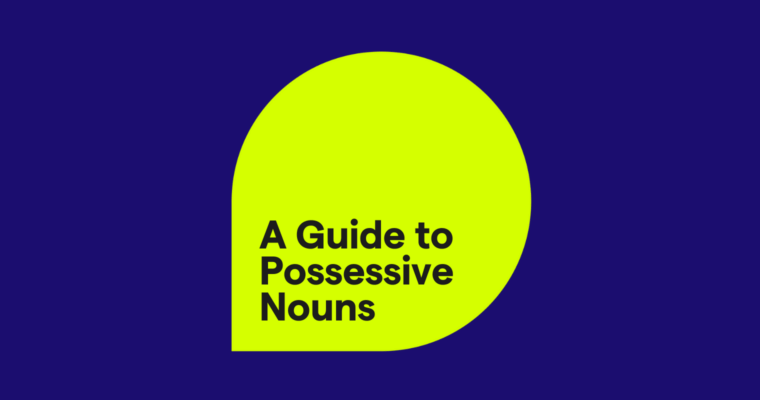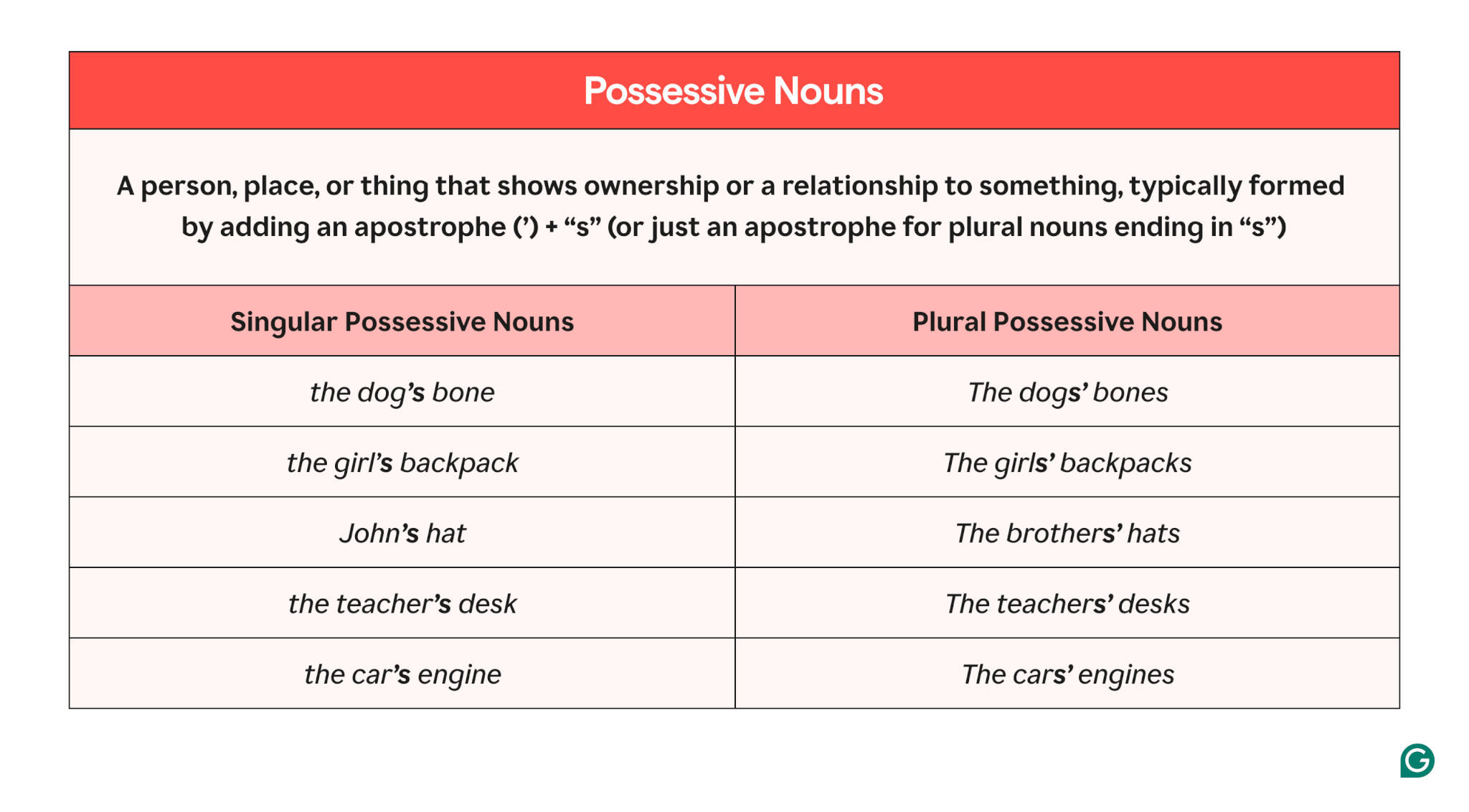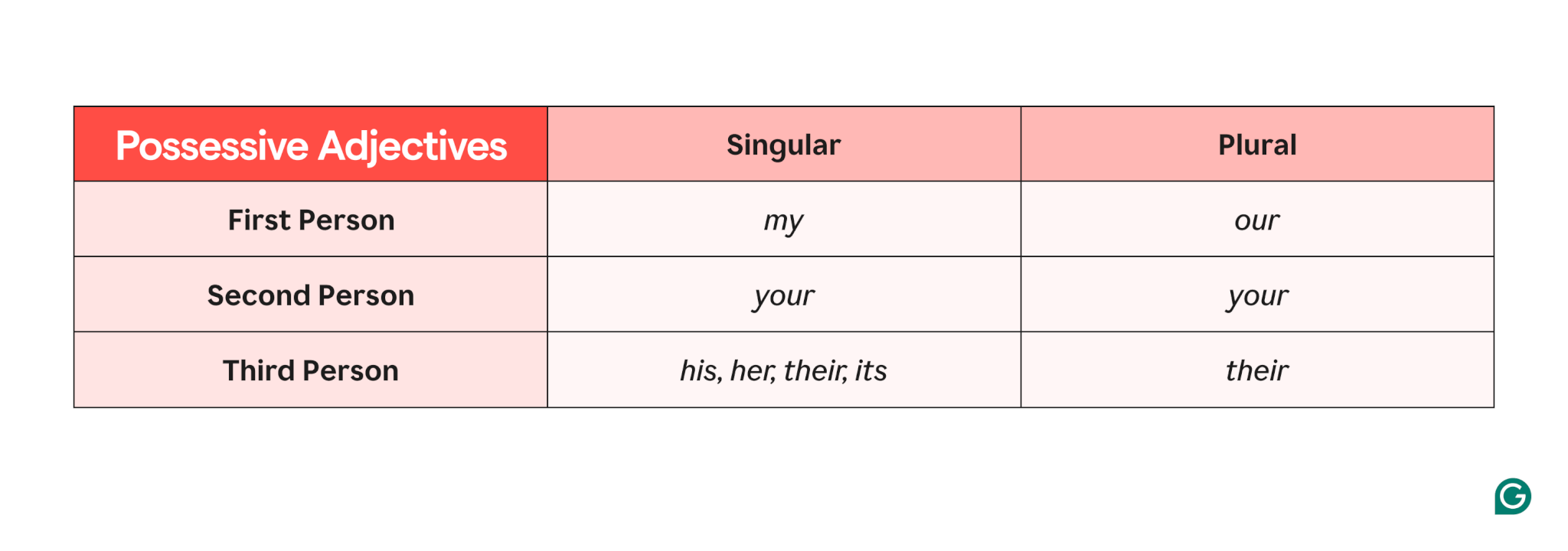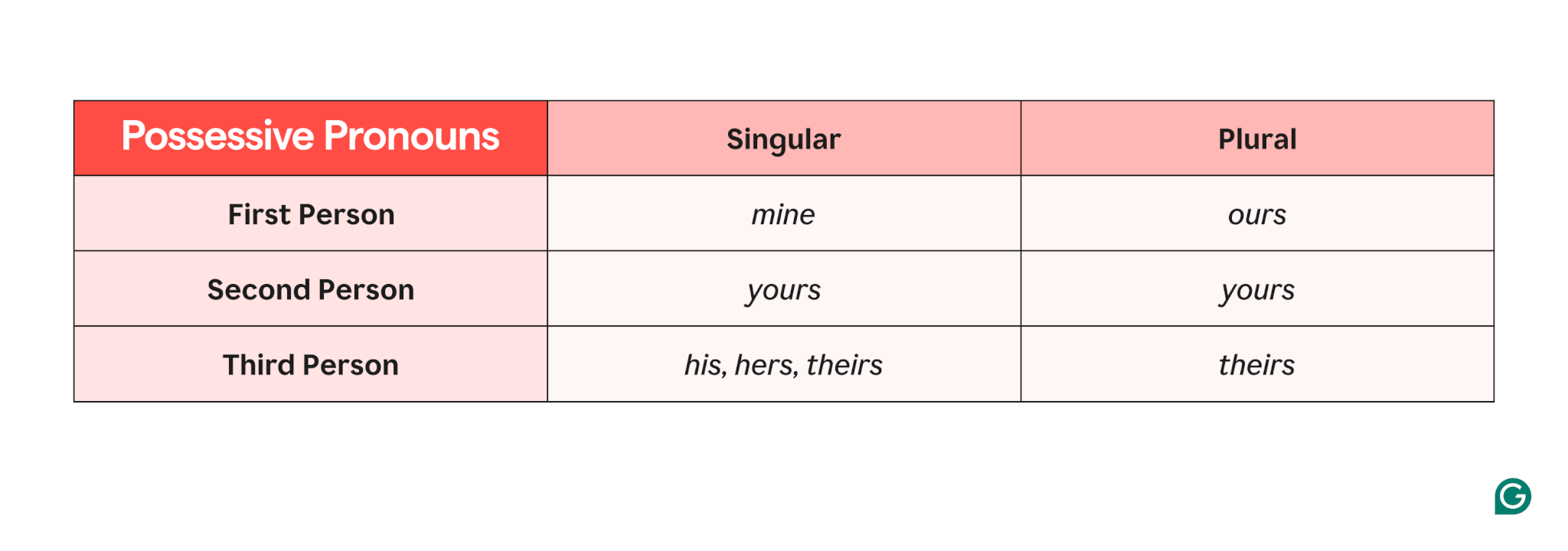
- A possessive noun is a noun that shows ownership or a direct connection, usually identified by ’s.
- Possessive nouns help communicate the relationships between nouns. For example, in the phrase the student’s notes, the word student’s is a possessive noun, showing that the notes belong to the student.
- Plural possessive nouns follow different rules depending on their ending letters.
- Compound and hyphenated possessive nouns follow the same rules as singular and plural possessive nouns.
- Possessive pronouns can be used in place of possessive nouns.
Possessive nouns can get confusing, especially when you’re making a noun ending in s possessive or learning to use the correct possessive forms of plural nouns. Below, we explain everything you need to know about possessive nouns and give plenty of examples.
Table of contents
Common mistakes with possessive nouns
What is a possessive noun?
Possessive nouns are nouns that show ownership or a direct connection. Typically, singular possessive nouns use an apostrophe ( ’ ) and the letter s at the end of the word to take the possessive form. Almost any noun can become possessive, even abstract nouns.
- dog -> dog’s
- Maria -> Maria’s
- The Empire State Building -> The Empire State Building’s
Pay close attention to that apostrophe: In English, we also add s to the ends of words to make them plural. So the apostrophe can determine whether a noun is possessive or plural, as with boys versus boy’s. Here, boys means more than one boy (plural), but boy’s means one boy has ownership over something (singular possessive).
Possessive nouns are followed by the object of the possessive. In this possessive example, the desk is the thing that Kali owns because it comes directly after the possessive noun:
In other words, Kali owns the desk. The object of the possessive is the first noun after the possessive noun, usually immediately afterward. However, you can still include some adjectives to describe the object of the possessive.
Possessive nouns can also show a relationship between two people or the relationship between a person and a place or an idea. For example, Sally’s husband and Tahiv’s cosmic theory are also phrases that contain possessive nouns.

What is the possessive case?
The possessive case is used to show ownership of something (Sanjay’s phone) or a direct connection to something (Sanjay’s sister).
Let’s look at some examples of possessives in a sentence.
There are two possessives in this sentence. The possessive adjective his, which reflects Aiguo, shows ownership of the hat. The possessive noun Tony’s, identified by the ’s, shows ownership of the car.
What is a possessive adjective?
Like possessive nouns, possessive adjectives show ownership or a direct connection. They correspond to English pronouns, matching person, gender, and number.

Additionally, the possessive adjective whose acts as the possessive form of the relative pronoun who, and it can introduce relative phrases and clauses.
Unlike the possessive nouns below, possessive adjectives do not use apostrophes. This is especially pertinent for the possessive adjective its, which is notoriously confused with the contraction it’s, meaning “it is.”
Prepositional alternatives
You can also show ownership or connection without possessive nouns by using the preposition of.
In this case, the owner (Kali) is the object of a prepositional phrase with of, and the thing that is owned (the desk) comes first. You do not need an apostrophe or the letter s when using this construction.
When a sentence is constructed this way, it generally highlights the object rather than its owner. In the example above, positioning the desk as the focal point underscores Shaima’s reverence for it. This construction is often found in academic and formal contexts, as it also conveys a formal tone.
The four types of possessive nouns
There are four types of possessive nouns:
- Singular possessive nouns: These are standard singular nouns that become possessive by adding an apostrophe and the letter s. Example: We rode in Javier’s car.
- Plural possessive nouns: These are plural nouns that end in s. They are made plural by adding an apostrophe after the s. Example: It was the students’ last day.
- Possessive pronouns: Like all other pronouns, these stand in for possessive nouns and follow antecedents to make sentences flow more easily. Example: Derek offered Brenda a soda, which was in his refrigerator.
- Irregular possessive nouns: Irregular nouns, like teeth, become irregular possessive nouns by following rules unlike those for regular nouns. Example: The heroes’ capes are yellow.
Read on to learn more about each type of possessive noun.
Singular possessive nouns
Singular possessive nouns are regular nouns that are made possessive by adding an ’s. The most basic form of possessive nouns is the singular possessive noun.
The formula for singular possessive nouns is: [singular noun] + [’s]
Nouns that end in s, especially proper nouns, can cause a lot of confusion. However, it’s OK to add an ’s after an s, as long as the noun is singular (the boss’s chair).
Keep in mind that this includes both mass nouns and collective nouns. Mass nouns are nouns that are uncountable and don’t have a plural form, like sand or money. Collective nouns are singular nouns that represent multiple things, like team or family.
Singular possessive noun examples
Plural possessive nouns
Plural possessive nouns are plural nouns that end in s. Plural nouns are more challenging to make possessive because they already have an s at the end. As you can see below, the proper construction adds only an apostrophe to the end.
The formula for plural possessive nouns is: [plural noun] + [ ’ ]
However, proper nouns and general nouns that end in s, such as Carlos or class, still use ’s.
Plural possessive noun examples
Possessive pronouns
Possessive pronouns are the noun form of pronouns that show possession. Like regular pronouns, they are used instead of other nouns to avoid repetition.
Unlike other possessive nouns, possessive pronouns do not come before the object of the possessive. Usually, what a pronoun refers to is mentioned earlier, and you use the possessive pronoun instead of repeating the original word.

Be careful to not confuse possessive pronouns with the possessive adjectives mentioned above. Possessive pronouns act as nouns, not adjectives. You must use them as nouns.
Possessive pronouns examples
Irregular possessive nouns
Not all nouns take a plural form by adding s. Irregular plural nouns, like children or teeth, each have unique plural forms. The possessive form of irregular plural nouns depends on whether or not they already end in an s.
- If the irregular plural noun has an s at the end, add only an apostrophe. Example: knives’ handles
- If the irregular plural noun does not have an s at the end, add both an apostrophe and an s. Example: teeth’s reflection
Irregular possessive noun examples
Possessive noun rules
Possessive nouns follow consistent rules. These rules exist to make possessive nouns’ meanings clear, as they can become muddled when writers make mistakes. This is especially true in sentences that contain compound possessives or hyphenated possessive nouns.
1 How to form possessives with two or more nouns
Forming a possessive with two or more nouns depends on whether the nouns relate to the same or different things. These are known as compound possessives.
What if more than one person owns something? If multiple nouns own or connect to the same object, only the last one in the series is possessive.
What if two or more nouns each own different versions of something? In this case, make each separate noun possessive.
Notice how, in these examples, the objects of the possessive are also plural (rooms, policies, cats) because there’s more than one.
2 How to form possessives with hyphenated and compound nouns
Hyphenated and compound nouns can seem tricky, but they’re actually pretty simple. If they’re singular, just add an apostrophe and an s to the final word.
If the nouns are plural with a regular s at the end, add only an apostrophe to the final word.
However, if the word is plural without an s at the end, add both an apostrophe and an s to the final word.
3 How to add emphasis with the adjective own
Use the adjective own before the object of the possessive to add a special emphasis. This is useful when you want to draw attention to the ownership or connection to communicate your meaning more effectively.
Common mistakes with possessive nouns
Familiarizing yourself with common mistakes writers make with possessive nouns can help you avoid them in your own writing. Here are a few examples of common possessive noun mistakes:
Its vs. it’s
Contrary to other possessive pronouns, the possessive form of it is its. This is because it’s (with the apostrophe) is a contraction for it is.
- Possessive: The duck flapped its wings.
- Contraction: I should go. It’s getting late.
Singular vs. plural possessives
Singular possessive nouns end with an apostrophe plus s. Plural possessive nouns that end in s end with an apostrophe—with these, the apostrophe goes after the s.
- Singular: The boy’s shirt was red.
- Plural: The boys’ shirts were red.
Overuse of possessive forms
You can also show possession with the possessive form of. For example, you might write of the dog instead of dog’s. This is not grammatically incorrect, but it can be awkward, especially when used excessively.
Possessive nouns FAQs
What are possessive nouns?
Possessive nouns are used to show ownership or a direct connection. They are commonly recognized by the apostrophe and letter s at the end, as in Charlotte’s Web or the tree’s branches.
What are the four types of possessive nouns?
There are four kinds of possessive nouns: singular possessive nouns (one dog’s bone), plural possessive nouns (many dogs’ bones), possessive pronouns (bones of theirs), and irregular possessive nouns (the wolves’ bones).
When should you use possessive nouns?
Use possessive nouns to communicate the relationship between two nouns, such as a person and an item they own, two people, or a person and an idea. Example: Emma’s book is on the table.
Can you use possessive nouns with inanimate objects?
Possessive nouns can be used with inanimate objects, especially to indicate a direct connection or ownership. However, in some formal or academic writing, it might be preferable to use prepositional phrases like the engine of the car. Examples: The car’s engine or The book’s cover.
How do you use possessives with joint ownership?
If two or more nouns jointly own something, only the final noun should be in the possessive form. Example: Jake and Emily’s house (they share one house). If each noun owns something separately, make each noun possessive: Jake’s and Emily’s houses (two different houses).





